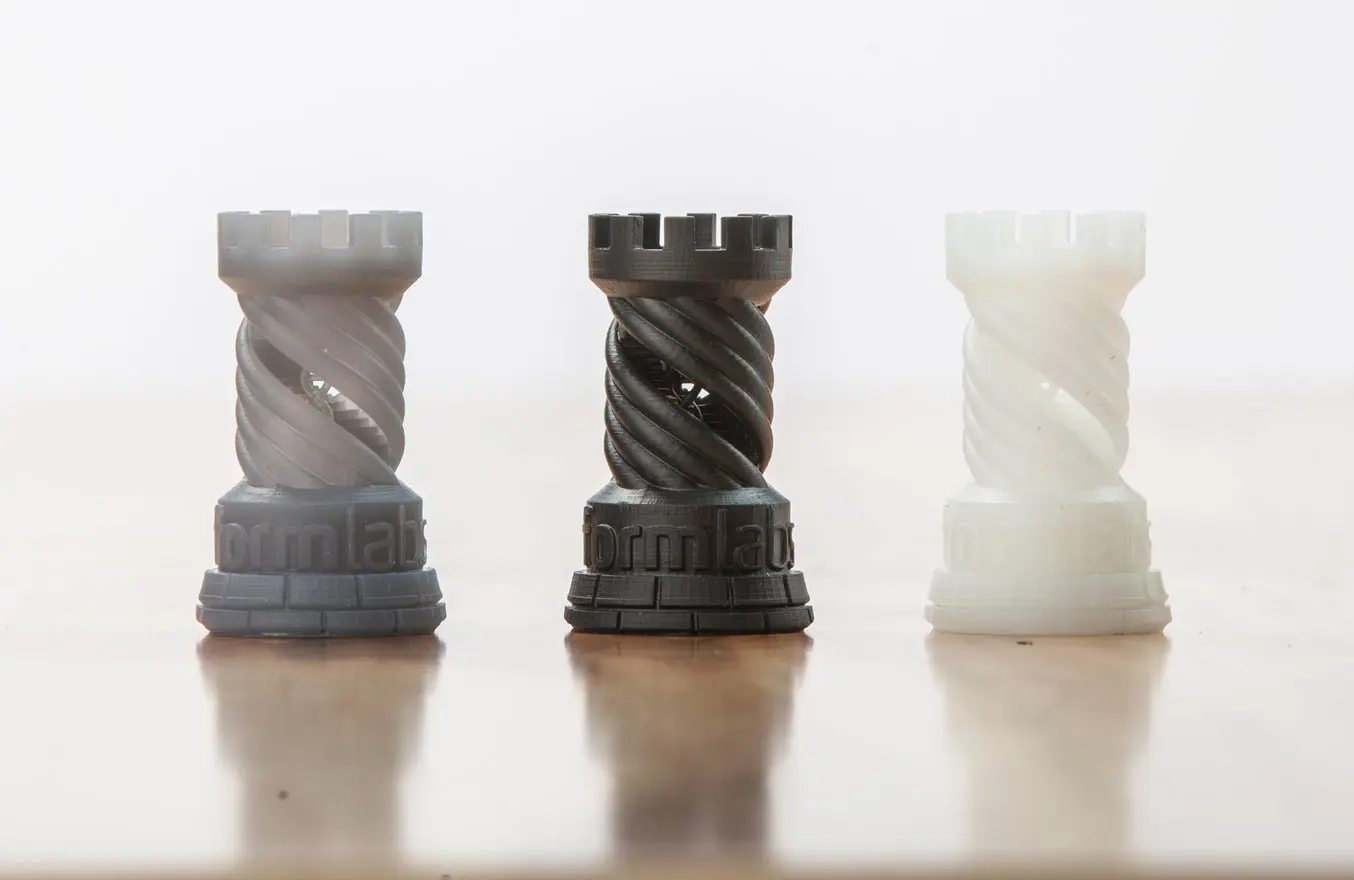
There’s no better way to communicate the quality of stereolithography and the Form 1+ than to hold a part in your hand, so we put a lot of effort into designing the sample parts that we send out.
In choosing our sample parts, we look for design elements that fully convey the high-resolution capabilities of desktop 3D printing. That takes some clever thinking. Want to check-out the quality of the Form 1+ yourself? Request a sample.
This week, we’re introducing a new sample part into our lineup. We’re calling it the Twisted Rook. Designed by our own Craig Broady, the Twisted Rook includes new design elements that demonstrate capabilities made possible by the Form 1+.
We sought out Craig, to hear about the thinking that went into creating this new awesome part.
The original rook was pretty cool – why add a twist?
The spiral is a flowing, organic shape––something that the Form 1+ excels at making. In the classic rook, there was already a double helix and spiral staircase. I wanted that language to extend to the wall as well. Two pieces of the twist are missing to give a glimpse into the complex forms inside.

Was there an ultimate goal with creating this new design?
When I saw a 3D printer for the first time seven years ago, I was given a classic rook as a sample part. To this day, that piece resides on my nightstand. The classic rook is a great part that demonstrates the capability of 3D printers. It's become the quintessential part for sizing up a 3D printer's performance.
Despite this, I knew the Form 1+ could tackle more complex shapes and features that aren't present in the classic rook. So I decided to design one on my own–with some Formlabs branding, of course.
While the twist wall replaces brick for much of the rook, the brick pattern remains at the bottom of the part. The double helix now has horizontal strands (making it look more like DNA), demonstrating the Form 1+'s ability to make overhangs on delicate features. The ceiling is more cutaway, giving a better view into the inside of the part.
Lastly, text (with features as small as 0.2mm) was added at the top, showing the incredibly fine detail that can be achieved with the Form 1+.

The new sample part is printed without supports. Why?
Support structures are great—and the manual supports introduced in PreForm 1.5 are even cooler.
But there are some cases where support structures are unwanted. For a sample part, where we want the print time and post-processing time to be a small as possible, support structures are best avoided.
Designing a part to print without support structures requires a bit more thought. First, there must be no overhangs, otherwise the part will fail at that point in the print job. A strong base is a must (>1 cm2) to ensure that the part sticks to the build platform.
Additionally, since the resin tends to shrink when cured (and the aluminum build platform does not) some building in some flexibility at the base, so that part can “breathe” is key if you don't want the part to crack.
We’re excited to release this new part to our community to show what the Form 1+ can do. Request a sample today to see this awesome creation for yourself.